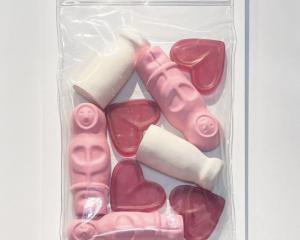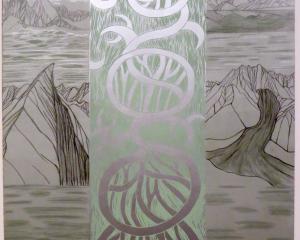"Paint-box Pioneers" (Otago Settlers Museum)
Paintings often provide a more vivid window on the past than any printed word.
This is certainly true for an impressive exhibition currently under way of artworks from the Otago Settlers Museum's collection.
In this extensive display, early Otago colonial settlement is revealed through painting, drawing and craft objects.
There is a wealth of information about the settlement and customs of the time, and also about the artistic mores of the period.
Understandably, the influences of British academic art are strong, especially in the landscapes, as artists attempted to display the new land as another Britain at the end of the world.
The portraits depicted are perhaps stronger from a modern viewpoint, and provide a record of many of the new settlement's prominent citizens.
The landscapes have their own charms, and are a lesson in how much Dunedin has changed.
They also offer sometimes surprising insights, such as H. M. Davey's watercolour of St.
Joseph's Cathedral complete with its never-built spire, and views of Lake Logan and Pelichet Bay, long since reclaimed as Logan Park.
Many fine works are displayed, including some exquisitely worked furniture, and many of the city's top early artists are represented, including John Turnbull Thomson, William Matthew Hodgkins, and several members of the Valpy family.
"Watercolour Years", Pauline Bellamy (Bellamys Gallery)
Pauline Bellamy commemorates 25 years of watercolour painting with a retrospective exhibition at Bellamys Gallery.
With such a large display of work, it is possible to track trends and styles within Bellamy's art.
Early somewhat generic pieces albeit hinting strongly at what was to come - slowly transformed into an expressionistic style where solid blocks of soft colour mark out the structures of the landscape.
This is exemplified well by 1974's Hills Creek.
The expressionist influences in turn give way to a more impressionist period, with bold, flashing brushstrokes hinting at the form of the land.
Bellamy's most recent work shows another style again.
Here, watery washes of paint bleed colour in flowing blooms of sky and land.
The styles are not isolated one from another - there is considerable chronological and stylistic overlap.
Strong impressionistic brushwork is evident as recently as 2007's Moonlight at St. Bathans, and in her Australian series from 2006.
It is perhaps the recent works that are the most impressive.
The use of free-flowing watery paint to create moody washes of sea and sky has led to some very fine pieces, among them such evocative images as 2008's Moonlight on Snow and Dusky Mood.
"Pictures of Nothing", Alexandra Kennedy (School of Art Gallery)
The Otago Polytechnic's School of Art has opened its bright new gallery space with an exhibition of abstract works by Alexandra Kennedy.
In these works the artist has created apparently random series of coloured lines on canvas.
Though appearing non-representational and random, this is partly illusory.
The works have been created by deliberately manipulating data with computer graphics packages, the resulting images being projected painted, resulting in works with many of the traits of abstract expressionism.
The paintings owe much to indeterminacy, a principle used in modern art and minimalist music, and it is with the music of composers like John Cage and LaMonte Young that analogies can be most readily drawn.
In their music sonic patterns with no melodic or rhythmic structure coalesce to create meditative or jarring sound-scapes that can be intensely beautiful one moment and unlistenable to the next.
So it is with these aleatory paintings.
In their very randomness, some of the works produce worlds for the eye to explore; others may leave the viewer baffled.
In many ways, however, the process rather than the end result is of prime import - the artistic equivalent of it being better to travel than to arrive.







![Untitled (c. mid 1990s, [pink 3]), by Martin Thompson, 415mm×590mm. Photo: courtesy of Brett...](https://www.odt.co.nz/sites/default/files/styles/odt_landscape_small_related_stories/public/story/2024/02/untitled_pink_3.jpg?itok=Q0aQrc9o)




